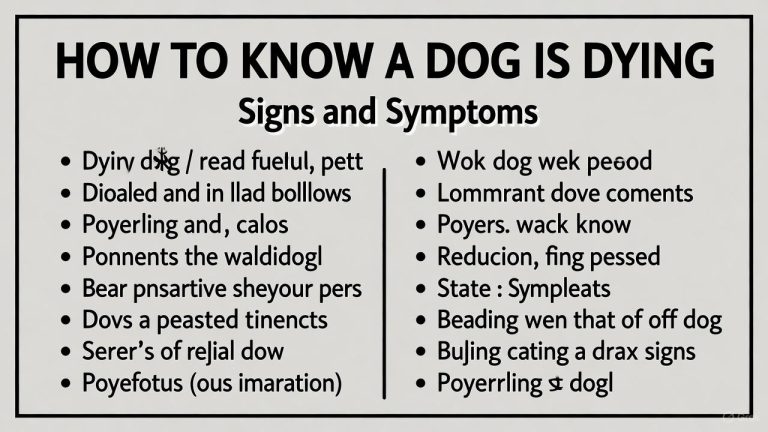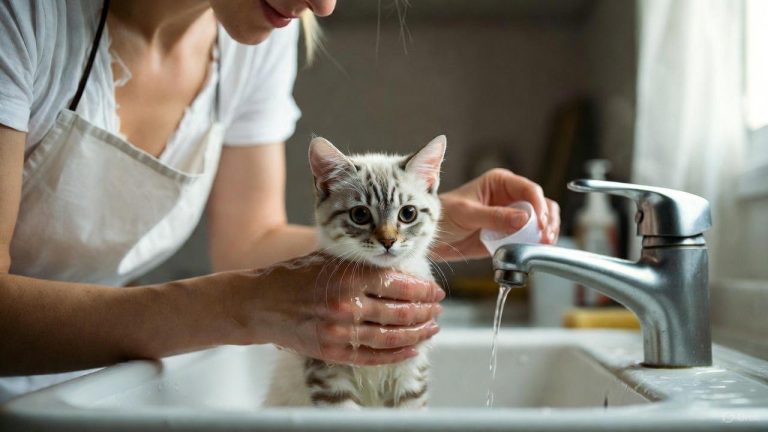How to Find Your Lost Cat?
Losing a beloved cat feels devastating. Your heart races, panic sets in, and you wonder if you’ll ever see your furry friend again. The good news? Most lost cats return home within the first week when owners take the right steps. This guide walks you through proven methods that reunite thousands of cats with their families each year.
Act Fast: The First 24 Hours Are Critical
Time matters when your cat goes missing. Indoor cats especially struggle outdoors and often hide nearby, scared and disoriented. Start your search immediately rather than waiting to see if your cat returns on their own.
Check Every Hiding Spot Inside First
Before assuming your cat escaped, search your home thoroughly. Cats squeeze into impossible spaces when frightened or curious. Look under beds, behind appliances, inside closets, and even washing machines or dryers. Call your cat’s name softly while searching – they might meow back if they’re stuck somewhere.
Check garages, basements, and attics carefully. Cats often slip into these areas and become trapped when doors close behind them. Open cabinets, drawers, and any storage areas your cat might have explored.
Secure Your Home Base
Once you confirm your cat isn’t inside, prepare your home for their return. Leave doors slightly open if possible, especially the one they normally use. Place their favorite food, water, and litter box outside. The familiar scents help guide lost cats home.
Set up a comfortable sleeping area near your door with their favorite blanket or toy. Many cats return during quiet hours when fewer people and cars are around.
Search Your Immediate Neighborhood Systematically
Lost cats rarely travel far from home initially. Most stay within a 300-foot radius of their house during the first few days. Focus your search efforts on this area before expanding outward.
Start with a Grid Pattern
Divide your neighborhood into sections and search each one methodically. Look under porches, in bushes, behind trash cans, and around sheds or garages. Cats often hide in dark, enclosed spaces where they feel safe.
Check with neighbors immediately. Many people spot cats but don’t realize they’re lost pets. Ask neighbors to check their garages, sheds, and basements. Sometimes cats accidentally get trapped in these spaces.
Use Your Voice Effectively
Call your cat’s name clearly and wait for responses. Scared cats might not come immediately but could meow back to let you know their location. Try calling during quiet times like early morning or evening when there’s less traffic noise.
Bring a treat bag and shake it while calling. The familiar sound often encourages cats to emerge from hiding spots. Some cats respond better to their owner’s voice than to strangers, so do this search personally rather than sending others.
Search During Peak Cat Activity Times
Cats are most active during dawn and dusk hours. Plan your search sessions around these times when your cat is more likely to be moving around. They might also be more responsive to your calls during these natural activity periods.
Night searches can be effective too. Use a flashlight to check dark areas, and listen carefully for movement or meowing sounds. The quieter nighttime environment makes it easier to hear your cat’s responses.
Create Missing Cat Flyers That Get Results
Well-designed flyers significantly increase your chances of finding your lost cat. People need clear information to identify and contact you about sightings.
Include Essential Information
Your flyer needs a clear, recent photo of your cat. Choose an image that shows their distinctive markings, coloring, and overall appearance. Include multiple photos if your cat looks different from various angles.
Write a brief description including:
- Cat’s name and age
- Color and breed
- Distinctive markings or features
- Size and weight
- Last seen location and date
- Your contact information
Make Your Flyer Stand Out
Use bright, waterproof paper that won’t fade in rain or sun. Bold headers like “MISSING CAT” or “LOST PET” catch attention quickly. Keep text large enough to read from a distance.
Include the word “REWARD” if you’re offering one. Even small rewards motivate people to actively look for your cat rather than just keeping an eye out passively.
Post Flyers Strategically
Place flyers at eye level in high-traffic areas like grocery stores, coffee shops, and community bulletin boards. Ask local businesses for permission before posting on their property.
Target areas where cat lovers frequent: veterinary clinics, pet stores, and animal shelters. These locations attract people who pay attention to animals and are more likely to help.
Post flyers along walking routes, near schools, and in neighborhoods surrounding your home. Dog walkers and joggers often notice cats during their regular routes.
Harness Social Media and Online Resources
Digital tools expand your search reach far beyond your immediate neighborhood. Social media platforms connect you with thousands of local residents who might spot your cat.
Facebook Groups Work Wonders
Join local Facebook groups dedicated to lost pets in your area. Post clear photos and information about your missing cat. Many communities have active pet recovery groups with hundreds of members who share sightings and tips.
Share your post in neighborhood groups, community pages, and local buy/sell/trade groups. Ask friends and family to share your posts to reach even more people.
Use Specialized Pet Recovery Websites
Register your lost cat on websites like PawBoost, Finding Rover, and Petco Love Lost. These platforms specialize in reuniting lost pets with their families and have extensive user networks.
Create profiles on multiple platforms to maximize your exposure. Include detailed information and clear photos on each site.
Monitor Online Classifieds
Check Craigslist, Facebook Marketplace, and other classified sites regularly. Sometimes people find cats and post about them online. Search using keywords like “found cat,” “stray cat,” or your cat’s breed and color.
Set up alerts for these keywords so you receive notifications when relevant posts appear. Quick responses to found cat posts increase your chances of successful reunification.
Contact Local Animal Shelters and Rescues
Animal shelters and rescue organizations often receive lost cats, especially those picked up by animal control or brought in by concerned citizens.
Visit in Person
Call first, but plan to visit shelters in person when possible. Cats can look different when scared or stressed, and you might recognize your pet when staff members wouldn’t make the connection from a description alone.
Check back regularly, even if your cat wasn’t there initially. New animals arrive daily, and your cat might be brought in days or weeks after going missing.
Provide Detailed Information
Give shelters a clear photo and detailed description of your cat. Include information about their personality, habits, and any identifying features like scars or unique markings.
Leave your contact information and ask staff to call immediately if a cat matching your description arrives. Many shelters will hold found pets for longer periods when they know someone is actively searching.
Expand Your Search Radius
Contact shelters within a 20-mile radius of your home. Cats sometimes travel farther than expected, especially if they’re picked up and transported by well-meaning people who find them.
Use Humane Traps for Shy or Scared Cats
Some cats become too frightened to respond to their owner’s calls, even when they’re nearby. Humane traps help capture these scared cats safely.
Set Traps in Strategic Locations
Place traps near areas where your cat was last seen or where you’ve had confirmed sightings. Choose quiet spots away from busy roads or high foot traffic.
Use your cat’s favorite food as bait. Strong-smelling options like tuna, sardines, or wet cat food work well. Place food at the back of the trap so your cat must fully enter to reach it.
Monitor Traps Closely
Check traps every few hours, especially during hot or cold weather. Never leave a trapped animal unattended for extended periods. Cats can become stressed or injured if left in traps too long.
Set traps during your cat’s most active times, typically dawn and dusk. This increases the likelihood of catching your cat rather than other animals.
Consider Professional Help
Some areas have professional pet recovery services that specialize in trapping lost cats. These experts have experience with scared animals and sophisticated equipment that increases success rates.
What to Do When You Find Your Cat
Finding your lost cat brings incredible relief, but the reunion requires careful handling. Your cat might be scared, injured, or disoriented from their outdoor adventure.
Approach Calmly
Move slowly and speak softly when you first see your cat. They might not recognize you immediately due to stress or fear. Let them come to you rather than grabbing them suddenly.
Bring a carrier or secure transport method. Even friendly cats might bolt again if they’re still frightened from their experience.
Get Veterinary Care
Schedule a veterinary checkup as soon as possible after your cat’s return. Outdoor adventures expose cats to parasites, diseases, and potential injuries that aren’t immediately visible.
Your vet can check for dehydration, weight loss, wounds, or other health issues that might need treatment. Even cats who seem fine can have underlying problems from their time outdoors.
Help Your Cat Readjust
Keep your cat indoors for several days after their return. They need time to decompress and remember that home is safe. Provide extra attention, favorite foods, and familiar comforts.
Some cats experience behavioral changes after being lost. They might be more clingy, anxious, or skittish than before. These changes usually resolve with time and patience.
Prevent Future Escapes
Once you’ve recovered your lost cat, take steps to prevent future disappearances. Prevention is always easier than searching for a missing pet.
Secure Your Home
Install screens on windows and check them regularly for tears or loose areas. Cats can push through damaged screens or squeeze through surprisingly small gaps.
Be mindful of open doors, especially when bringing in groceries or welcoming guests. Cats can slip out quickly when distracted humans leave doors open.
Consider Microchipping
Microchips provide permanent identification that can’t fall off like collars. If your cat ends up at a shelter or veterinary clinic, staff can scan for chips and contact you immediately.
Keep your contact information updated with the microchip company. Moving without updating your information makes the chip useless for reunification.
Use Breakaway Collars with ID Tags
Even microchipped cats should wear collars with current contact information. This allows anyone who finds your cat to contact you directly without needing special equipment.
Choose breakaway collars that release if your cat gets caught on something. This safety feature prevents strangulation while still providing identification.
Keep Hope and Stay Persistent
Finding a lost cat takes time, effort, and persistence. Some cats return home within hours, while others take weeks or even months to be reunited with their families.
Don’t give up after the first few days. Continue searching, posting flyers, and checking with shelters. Many cats are found long after their owners thought they were gone forever.
Stay positive and keep trying different approaches. The combination of active searching, community involvement, and patience gives you the best chance of bringing your beloved cat home safely.
Your furry friend is out there waiting for you to find them. With dedication and the right strategies, you can write your own happy reunion story.







